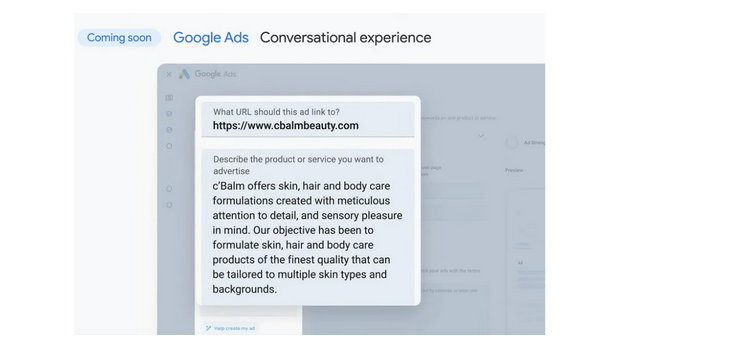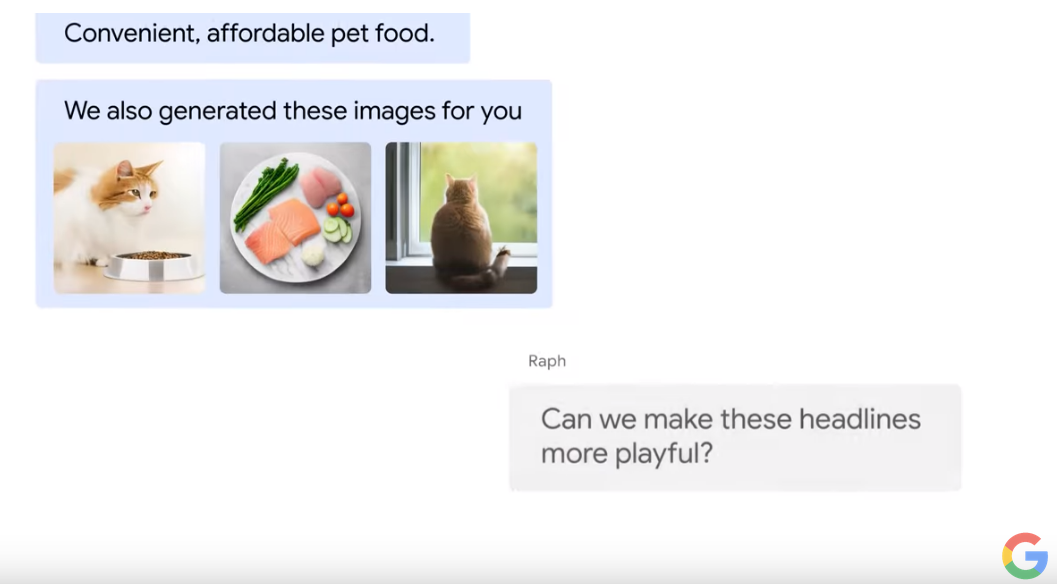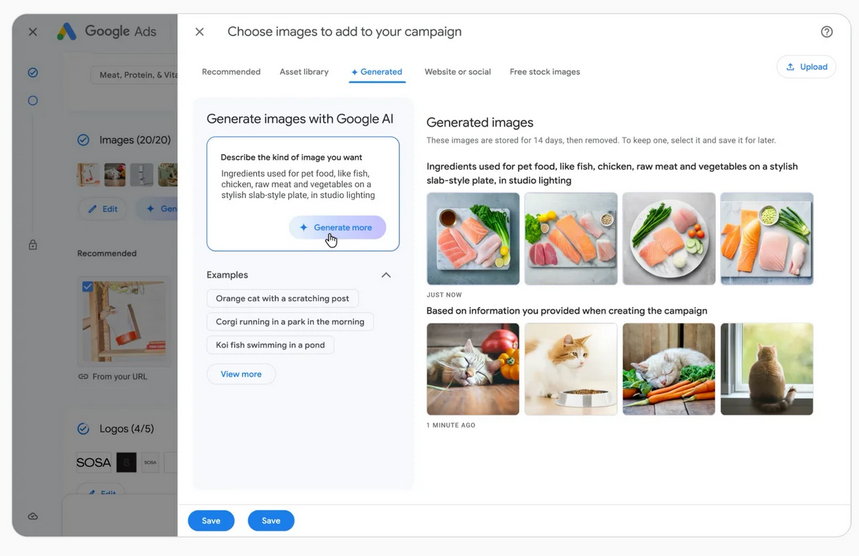The AI Arms Race: Can Ad Blockers Keep Up with AI-Generated Ads?
Generative AI is upending many industries, starting from digital art and going all the way up to coding and drug discovery. While some are still bracing for the full impact of changes that the AI revolution will bring, others are undergoing an AI makeover — or makeunder — in real time. The online advertising industry is the prime example of the latter.
When you think about it, the online advertising industry has all the characteristics needed to become the perfect playground for AI. Unlike tasks that require complex reasoning or high accuracy and where AI’s “hallucinations” could cause serious problems and easily go undetected, basic ad content creation is relatively simple and straightforward. After all, the goal is usually to grab a person’s attention for a few seconds, not to confuse them with a sophisticated message. When it comes to ad creatives such as images, videos, and copy, AI has shown that it’s capable of producing them at a passable quality with limited human intervention.
These capabilities of generative AI are being seized upon by ad tech giants. Google, Meta, and Amazon are among the bigwigs offering or about to offer advertisers the ability to use AI to create ads and entire ad campaigns. According to a report by GroupM, AI-powered marketing is already a huge business, generating more than $370 billion in global ad revenue, or about 45% of all advertising. And it will only grow bigger. By 2032, AI-powered advertising is expected to account for $1.3 trillion in ad revenue, more than 90% of the total.
But what does this mean for regular users? How will they cope with the flood of AI-generated ads that may be more persuasive and pervasive than ever before? And what is the role of ad blockers in all of this?
AI and ad tech: how it started
It must be said that while Big Tech is preparing to ride the generative AI wave, most if not all online advertising platforms are already using AI and machine learning to some degree.
For example, Google says that AI is “foundational” to its advertising business, which brings in about 80% of its total revenue. One of the examples of how Google is already using AI is responsive search ads, which it introduced in 2018. The feature allows Google to automatically test different combinations of headlines and ad descriptions entered by the advertiser, to determine the best performing ones. Other AI-powered tools already in use by Google include “broad match” keyword setting and “smart bidding”. In 2021, Google unveiled Performance Max, a new campaign type that aims to bring all of its AI-powered tools under one roof.
Meta last year also released a suit of tools that relies heavily on machine learning and automation. Called Advantage+, it uses AI to enable advertisers “eliminate the manual steps of ad creation and automate up to 150 creative combinations at once.” Another early adopter of AI and automation, the e-commerce giant Amazon, has been using AI for years to provide personalized product recommendations — a technology that is credited with driving its success.
The same major ad tech players who have already harnessed the power of “traditional” or “classic” AI based on data, are now racing to integrate generative AI, which is not data-driven but content-driven, into their products. Many of their tools are still works in progress, but here’s a brief overview of what these companies have revealed and promised so far.
How Amazon, Meta, Google want to use generative AI for advertising
Perhaps, the most detailed offer comes from Google. At the end of May, the company announced a new feature that will allow advertisers to delegate much of the ad content generation to AI. All advertisers will have to do is provide a URL of their website to Google. From there, Google’s AI will take over, relegating the role of supervisor and editor to the human. Google says its AI will summarize the site, come up with keywords, headlines, descriptions, and “other assets for your campaign,” such as images.

Advertisers will be able to improve resolution and remove background from their images, but also add objects that will be generated by AI based on a text prompt. In addition to enhancing advertisers’ own images, Google AI will also generate new images from scratch.

If the advertiser would like AI to tweak its own work to match their preferences more closely, they can chat with an AI-powered chatbot that would be integrated into their Google Ads profile.

Google AI will also generate new headlines for search ads on the fly — that is, without human intervention — so that they are “more relevant to customer’s queries.” Advertisers have no control over this AI tool from Google and have to trust that it understands their website correctly. Google, however, seems very confident in its chatbot’s cognitive abilities and encourages advertisers to treat it as a coworker (not a flawed algorithm that sometimes makes silly mistakes in reasoning). Google says: “Now, you can chat your way into better performance — ask Google AI for ideas, just like you might ask a colleague.”. Sure, why bother with human interaction when you can have an enlightning chat with AI? Never mind that AI is far from perfect and often makes blunders that would embarrass even a child. But that’s another story.
Meta, not to be outdone by Google, presented its own suite of generative AI features in May, which it has already made available to select advertisers. The core of Meta’s offer is the ‘AI Sandbox,’ which will serve as a testing playground where advertisers can try out its AI-powered tools. These tools include three features so far: one-click ad copy variations, text-prompted background images, and automatic video and images cropping. Meta’s AI tools are not that numerous or impressive as Google’s yet, but it is probably just warming up. After all, ads are Meta’s bread and butter, bringing it a whopping 97% of its total profits, mostly from Facebook and Instagram.

Of the three, Amazon’s generative AI offer to advertisers is the most mysterious. According to the Information, Amazon confirmed that it is developing AI-enabled tools that will allow advertisers to generate photos and videos. Amazon may not be in a rush, as it has other revenue sources besides ads that constitute a fraction of its revenue, but it may want to start catching up with bigger players. As for now, Amazon’s advertising business still pales in comparison to Google’s or Meta’s, with about 7% market share, but unlike its competitors’ it is growing — and growing fast, showing a 21%(!) increase in the first quarter. So we would assume Amazon would not want to miss its chance with AI either. But what all of these will mean for users?
Bracing for a tsunami: risks of AI-generated ads
All of these innovations are aimed to simplify and speed up the ad creation process, and make ads themselves as persuasive as possible. With the further automation of the ad generation process, the cost of launching ad campaigns will likely become lower, allowing advertisers to cut their budgets and invest the freed resources in generating… ever more ads.
Regular users are at risk of being swamped by a flood of AI-generated ads that will be increasingly compelling, while not necessarily truthful. There is a concern that generative AI, which can ‘hallucinate,’ may produce content that is error-ridden or outright lies. While advertisers are supposed to still be at the steering wheel, at least in most cases, they may be tempted to rely too much on AI. This has happened in other fields: enter a lawyer who used ChatGPT to write court filings, and did not check its output, which included fake cases. This case was exposed, but there may be more that we don’t know about.
Of course, companies that develop these generative AI tools say that they will try to minimize the risk of hallucinations. For example, Google told the Financial Times that it will “put firm guardrails in place” to prevent AI from hemorrhaging lies. However, so far the quest to make AI reliable has been unsuccessful. If AI’s ultimate goal is to lure in customers, not to tell the truth, it might try to achieve it by all means possible. A US military official has recently hypothesized that an AI-powered drone could kill a human operator if prevented from accomplishing its mission. While military and commercial AI applications are completely different use cases, in both scenarios safeguards should kick in, but they might not — as we’ve already witnessed too many times.
AI vs AI — the future of everything and ad blocking
There’s an option to block most, if not all, ads by using an ad blocker, but while AI is changing the game of ad creation, it is also changing the game of ad blocking. The innovation that AI brings to ad creation can also drive advances in ad blocking, such as integrating GPT with ad blocking tools. Some AI-added approaches to advertising, such as ads inside chatbot responses, in particular may require new ways of stopping them. Traditional ad blocking methods may not work in these cases, as they may erase the whole response or key parts of it. This could lead to a full-blown war between AI-generated ads and AI-powered ad blockers. This could be seen as a dual use of AI for good and evil (depending on which side you stand), and it is part of a bigger trend.
Some examples of this trend include using AI to write academic papers and to detect AI-generated content, an approach called “fighting fire with fire”. Another example is an OpenAI program that supports generative AI projects for cybersecurity, and that aims to address some of the risks OpenAI has itself created.
While Hollywood may paint a dystopian image of AI, it’s essential to remember that the technology is neither inherently good nor evil. Instead, the key lies in how it is used and regulated. It has the potential to create amazing things, such as drugs that can fight serious deseases, but it can also create problems, such as deepfakes or excessive ads.
As the world of AI evolves, regulations must strive to keep pace. Until such a time comes, users must learn to navigate the vast sea of AI-generated content, armed with the knowledge of its risks and the tools to mitigate them, and it looks like one of those tools can be an AI-powered ad blocker.












































